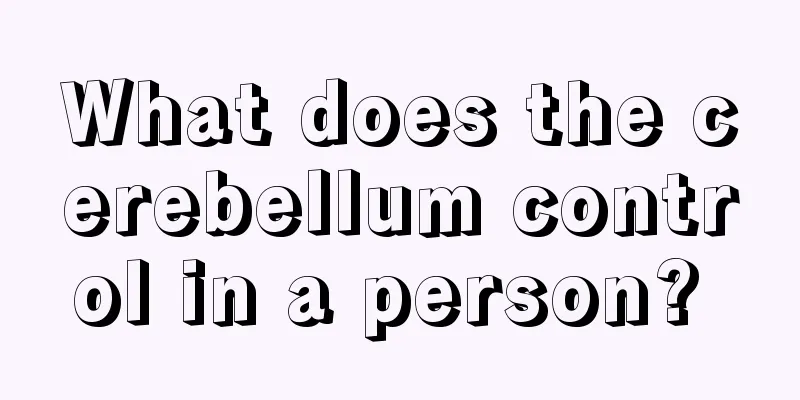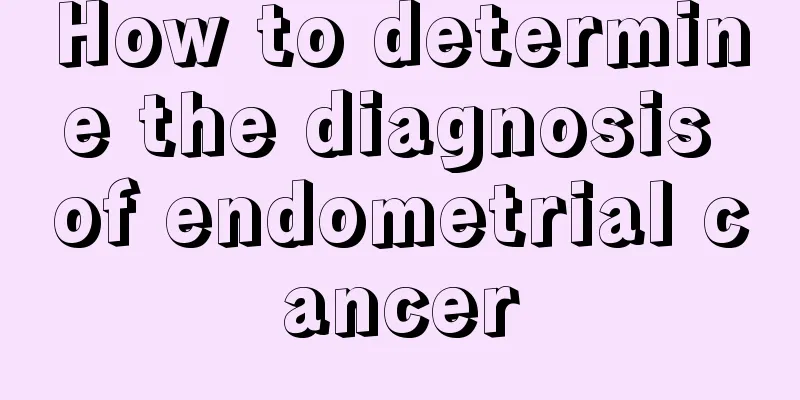What does the cerebellum control in a person?

|
There are many diseases in the human brain. Some are congenital brain diseases, and some are brain diseases caused by acquired factors. These diseases may cause cerebellar atrophy, and then the control function of the cerebellum will be greatly reduced or even lost, eventually leading to serious symptoms in the human body. So what does the human cerebellum mainly control? What does the cerebellum control in a person? The cerebellum, through its rich afferent and efferent connections with the cerebrum, brainstem, and spinal cord, is involved in the regulation of body balance and muscle tone (tonus), as well as the coordination of voluntary movements. The cerebellum is like a big regulator. Regulate body balance The cerebellum's regulation of body balance is carried out by the flocculonodular lobe, that is, the cerebellum. The body's balance regulation is a reflex process, and the flocculonodular lobe is the central device of this reflex activity. Information about changes in body balance is sensed by the vestibular organs and transmitted to the flocculonodular lobe of the cerebellum via the vestibular nerves and vestibular nuclei. The cerebellum then sends out impulses to regulate body balance. The impulses reach the anterior horn motor neurons of the spinal cord via the vestibulospinal tract and then reach the muscles via the spinal nerves, coordinating the movement and tension of the antagonistic muscle groups, thereby keeping the body balanced. For example, when a person stands with his head tilted back, the knee and ankle joints will automatically flex to counteract the shift in the body's center of gravity caused by the head tilting back, allowing the body to maintain balance and not fall. Regulate muscle tension Muscle tension is a basic reflex activity in which different muscle fiber groups in the muscle contract alternately, keeping the entire muscle in a constant state of mild contraction, thereby maintaining the body's standing posture. The cerebellum can regulate muscle tension activities, and its regulatory function is manifested in two aspects: inhibiting muscle tension and facilitating muscle tension. The cerebellum's ability to inhibit muscle tension is mainly due to the function of the vermis of the anterior lobe (old cerebellum), and this inhibitory effect is most obvious in decerebrated animals. Stimulating the vermis of the anterior lobe of the cerebellum in decerebrated cats can reduce the excessive tension of the extensor muscles caused by decerebration; conversely, removing this part will increase the decerebrate rigidity. These phenomena all indicate that the cerebellum has the function of inhibiting muscle tension. Coordinated voluntary movements Voluntary movements are intentional movements initiated by the cerebral cortex, while the coordination of voluntary movements is accomplished by the hemispheric part of the cerebellum, the neocerebellum. Damage to the neocerebellum can cause the victim to suffer from decreased muscle tone and a disorder of voluntary movement coordination, known as cerebellar ataxia. The main manifestations are: ① Impairment of movement accuracy. Intention tremor occurs. When the patient focuses on doing a certain action, such as pointing his finger to the nose, his finger trembles. The closer he gets to the target, the more violently his finger trembles, and he cannot grasp the exact direction of the movement. ②The coordination of movements is impaired. The patient loses the ability to stop a movement and immediately switch to a movement in the opposite direction, and the movements are broken down and discontinuous during exercise. For example, the patient cannot complete simple, rapid alternating movements such as quickly turning the palm, which is called detour movement disorder; when completing a movement in one direction and needing to change the direction of movement, the patient must first stop and think about the next step before starting a new movement again. All of these listed symptoms only manifest themselves during movement, indicating that the neocerebellum plays an important coordinating role in voluntary movement. This coordinating role is the result of the cerebellum regulating the activities of the cerebral cortex and spinal cord. |
<<: What are the characteristics of people with well-developed cerebellum?
>>: What are some exercises that can train the cerebellum?
Recommend
What is the reason for the sleepiness at the back of the head?
Sleepiness at the back of the head is a very comm...
Symptoms and treatment remedies for heel bone hyperplasia
Heel bone hyperplasia is a relatively rare bone h...
Early manifestations of bowel cancer symptoms
Patients with colorectal cancer need more care in...
What causes lung cancer?
The incidence of lung cancer in China is increasi...
What are the symptoms of insufficient gastric motility
Insufficient gastric motility has occurred in man...
4 reasons why you drool while sleeping
Drooling while sleeping may be caused by improper...
Chest tightness before menstruation
Menstruation is basically a physiological phenome...
How to choose oil-control and anti-dandruff shampoo
Some of us have oily hair and dandruff, which alw...
Is it safe to have a baby with pancreatic cancer?
Is it safe to have a baby with pancreatic cancer?...
There is something black in my ear
When we feel itchy in our ears, we usually use co...
Can melanoma be passed on to the next generation?
Can melanoma be passed on to the next generation?...
Nutritional value of lantern fruit
Lantern fruit is a common fruit among the people....
Can lymphoma be detected by blood test
Lymphoma is a relatively common disease, which is...
What is Roselle
Nature is a very complex biosphere. People often ...
I got pregnant during the rabies vaccination
Rabies virus is a very dangerous virus that paras...









